Nikolai Krymov, landscape painter: biography, creativity
Nikolai Petrovich Krymov is an artist who worked in the last century. Landscapes were his favorite genre. Fields, forests, rural houses, buried in snow or rays of light - Krymov wrote his native nature and did not change his chosen path despite the turbulent events that took place in the country. He survived three wars, knew poverty, but in his works he never touched on politics or topical issues, just as he never sought to please anyone with his creativity.
Family is the beginning
The artist N. P. Krymov was born on May 2 (April 20, old style), 1884. He was not one of those creators whose parents were categorically against the child following the path of art. Nikolai's father, Pyotr Alekseevich, was a portrait painter, worked in the manner of the "Wanderers", taught drawing in Moscow gymnasiums. He and his wife Maria Egorovna noticed the boy's talent early. The head of a large family (Nikolai had eleven brothers and sisters) from an early age instilled in children the ability to see the beauty of the world around them. He became the first teacher of Nikolai Krymov.
teachers
In 1904, the boy entered the Moscow School of Painting, Sculpture and Architecture in the architectural department. In 1907 he transferred to painting. Among his teachers were well-known artists: V. Serov, who made many changes in the educational process, L. O. Pasternak, father of Boris Pasternak, illustrator of the works of Leo Tolstoy, artist-wanderer of the younger generation. However, as Krymov himself writes, the artist who became his main teacher died before Nikolai became a student. It was Isaac Levitan. His work had a significant impact on the work of Krymov.
First success

Nikolai Krymov is an artist of a happy fate. His talent was appreciated already during his stay at the school. The study "Roofs with Snow", written in 1906, impressed the teacher A. Vasnetsov, brother of the famous artist. He bought the painting from a young master, and two years later the Tretyakov Gallery bought it. Krymov was then only twenty-four years old.
Blue Rose
Of course, Krymov is a landscape painter: he determined his favorite genre only when he started his creative path, but his style of painting underwent changes throughout his life. In 1907, Nikolai Petrovich became one of the youngest participants in the Blue Rose exhibition. The masters participating in the exhibition were distinguished by a special manner of depiction. They knew how to notice the mystery in ordinary beauty, to convey the poetry of the familiar. At the exhibition, Krymov posted three works: "By Spring" and two versions of "Sandy Slopes".
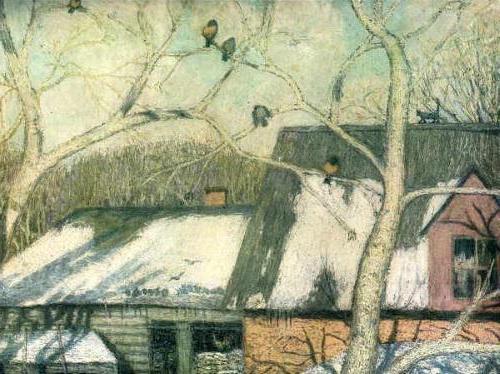
The artists who participated in the exhibition began to be called "Blue Bears". Their works were full of inner harmony and special silence. Representatives of the direction, including Krymov, tried their hand at impressionism. This genre was close in spirit to the Blue Bears. The Impressionists sought to convey fleeting impressions in their works, the beauty of the moment in its movement. However, as Krymov and his comrades-in-arms, who tried themselves in the young direction that originated in France, began to move away from him, translating new ideas, sometimes opposed to impressionism, in his canvases.
Further creative search
The artist N. Krymov fully satiated the craving for symbolism, characteristic of the Blue Bears, while working on the design of the Golden Fleece magazine. The paintings of that period (1906-1909, "Under the Sun", "Bullfinches" and others), with some blurring of colors and resemblance to midday haze, resembled tapestries.

At the same time, Krymov's writing style began to change. Symbolism and understatement began to give way to irony, joke and grotesque. Paintings “Windy day”, “Moscow landscape. Rainbow”, “After the Spring Rain”, “New Tavern” gravitate towards primitivism and convey new impressions that have accumulated over many years of living in Moscow with its fairs and holidays. Krymov's new landscapes are filled with children's perception. Light paintings literally breathe fun and mischief, joy because of simple and familiar events: the appearance of a rainbow, sunlight or new tall buildings on the street. And the artist conveys this with the help of bright colors and geometrization of the form, which replaced the careful study of color combinations. However, this manner of writing became only an intermediate stage in the creative development of Krymov.
Unattainable harmony
Since the 1910s, classical motifs characteristic of French landscape painters of the 17th century began to clearly appear in Krymov's work. and Nicolas Poussin developed a composition with three planes, each of which was dominated by a certain color: brown, green and, in the background, blue. Pictures painted in this manner combined reality and fantasy at the same time. They conveyed quite earthly landscapes, but the harmony that reigned on the canvas was unattainably perfect.
![]()
Nikolai Krymov is an artist who never blindly followed the teachers or recognized geniuses of the past. He combined the classical style of Poussin and Lorrain in his works with primitivism, as in the painting "Dawn", and later with his own theory of tone. Over time, he moved away from painting landscapes only from nature. Nikolai Petrovich began to supplement what he saw in reality with fantasy, reproducing plots from memory and creating the very harmony that most masters of the beginning of the last century pursued the dream of.
Winter and summer
From nature, Krymov painted only in the summer, when he and his wife left the city or visited friends. The artist was always looking for accommodation with a balcony in order to be able to work outdoors and depict picturesque landscapes.

In winter, the master created from memory, adding new elements to real paintings. These works, as well as those painted from life, conveyed the beauty and harmony of nature, its secret and obvious life. One of the canvases that the artist Krymov created in this way is “Winter Evening” (1919). Even if you do not know the name of the picture, the time of day on it is beyond doubt: the shadow gradually covers the snow, pinkish clouds are visible in the sky. Due to the play of color and light, the artist was able to convey the heaviness of the snowdrifts under which the earth sleeps, the play of the rays of the setting sun, not visible on the canvas, and even the feeling of frost, urging travelers home to the warmth of the hearth.
tone system
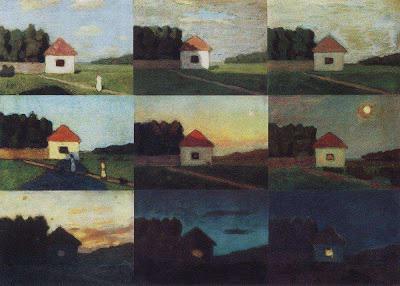
In the memoirs of contemporaries, the artist Krymov, whose paintings are now kept in museums and private collections, appears as a man of principle and consistency, having his own point of view on everything. Among his views, the theory of "general tone", developed and repeatedly tested by him, stands out. Its essence is that the main thing in painting is not color, but tone, that is, the strength of light in color. Krymov taught students to see that evening colors are always darker than daytime ones. Outlining the theory, he proposed to compare the white color of the sheet and Nikolai Petrovich substantiated in his articles, and then showed in his works that it is precisely the correctly chosen tone that gives naturalness to the landscape, and the choice of color becomes a secondary task.
Through all the vicissitudes of the era
Unearthly harmony, the play of light and shadow, peace and the moment caught - all this is the artist Krymov. The painting "Winter Evening", as well as the paintings "Grey Day", "Evening in Zvenigorod", "House in Tarusa" and others, convey the beauty of the world in general and nature in particular. Nikolai Petrovich did not deviate from this theme in his work, despite all the turbulent events that were then happening in the country. The political slogans and instructions of the party did not penetrate his canvases. He developed his "system of tone" and passed it on to his students. Nikolai Krymov died on May 6, 1958, having managed to transfer the science of painting to many young artists who later became famous artists.
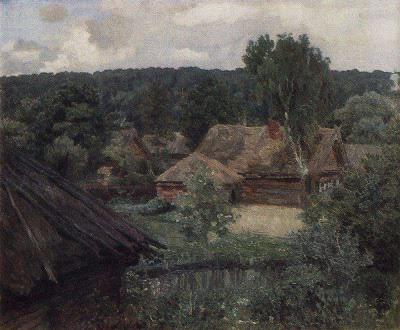
The contribution of Nikolai Krymov to the theory of painting is invaluable. Today, the master's works can be seen in the museums of the country. Many of Krymov's paintings are kept in private collections. The artist's canvases are still admired, and his capacious and well-aimed statements among artists have long become popular expressions.
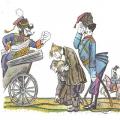 “Lefty” - a summary of the work N
“Lefty” - a summary of the work N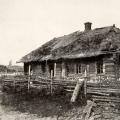 Turgenev, "Biryuk": a summary
Turgenev, "Biryuk": a summary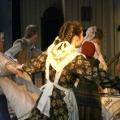 Comedy A.N. Ostrovsky "Poverty is not a vice": a summary of the work
Comedy A.N. Ostrovsky "Poverty is not a vice": a summary of the work